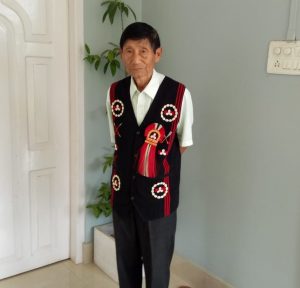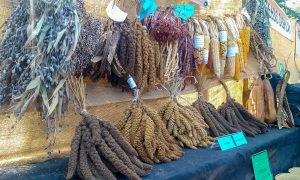The Highland Institute’s staff and Fellows explore and reflect on research conducted in some of the world’s most culturally rich and complex regions. Through their insights, analyses, and personal experiences, the blog offers a window into the diverse landscapes, histories, and communities they engage with. Read on to discover thought-provoking narratives and ground breaking research.

By Lino K. Zhimomi[1] Back in 1968 in Hovukhü village, Grandpa savoured a rich and satisfying meal that included an otter. Stories,

By Khrieletuonuo Yhome Since November 14, 1878, Kohima has not only been an important administrative centre but also a site

By Lue Chi Balancing Tradition and ModernityAlongside economic changes and the decline in spiritual rituals, Zhavame village has also seen

By Lu Chi Vanishing Forests When we spoke to the khel (ward) Head Gaon Bura (GB), he reflected on how Zhavame’s forests have changed over

By Lu Chi Introduction Zhavame village lies at the foot of Kapamodzu Peak, the fourth-highest mountain in Nagaland. Located in

By Lipokmar Dzüvichü* “There is no doubt … that all the tribes from Kurribarry in the Garrow Hills, on the Berhampootra,

By Chandan Jyoti Konwar When we say ‘coffee,’ what usually comes to mind? Cafés, the rich aroma of freshly brewed coffee,

By Tümüzo Katiry Introduction Festivals in the Naga tradition serve as key markers of the annual agricultural cycle. This cycle is

By Sholu Movi and Lu Chi Thanamir is a small, quaint village in the Kiphire district of Nagaland, India, located at

By Chandan Jyoti Konwar In the complex tapestry of urban environments, public spaces have long been seen as the central hub

By Khrieletuonuo Yhome Bees are valuable insects from an economic perspective because they pollinate crops and produce other useful items such

By Esther Swu The Highland Institute is collaborating with Dr Sahana Ghosh (Department of Sociology and Anthropology at the National

By Ningthoukhongjam Girija‘The very notion that art should have nothing to do with politics is itself a political position.’– George

By Kevide Lcho About RüzaphemaRüzaphema is in the Chümoukedima District of Nagaland. The village has a population of around 2400 individuals,

By Tarini Manchanda It is an April morning, and we head to Khonoma Village from Nagaland’s capital city, Kohima, along

By Tümüzo Katiry In the remote highlands of the North-Eastern region of India and the North-Western part of Myanmar, indigenous Naga

By Kevide Lcho Introduction to Oil Palm – A Versatile and Controversial Crop: Oil palm, scientifically known as Elaeis guineensis, is an

By Lu Chi IntroductionIn Part I of this two-part blog series, we looked at the turbulent history of Machi Village and

By Lu Chi The Journey BeginsI am a Myanmar-born ethnic Naga who recently arrived in Kohima, Nagaland, India, to work on

By Christian Poske With the support of the Firebird Foundation for Anthropological Research (USA), ethnomusicologist Dr Christian Poske conducted a research

By Saktum Wonti “We had to walk for two days to reach Noklak,” my mother would say when we were little

By Lu Chi, Sholu Movi and Joseph Venuh The Myclimate Research Team in Nagaland is conducting a project to study

By Saktum Wonti The dusty winds of February 2023 not only brought about spring to Kohima but also heralded the start